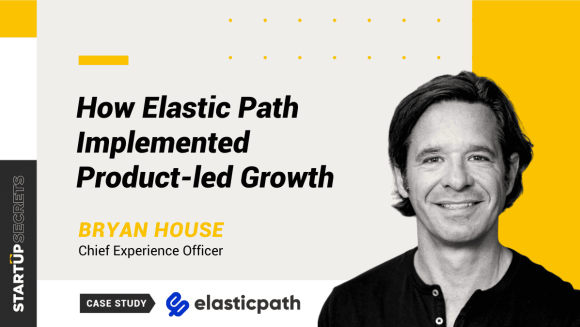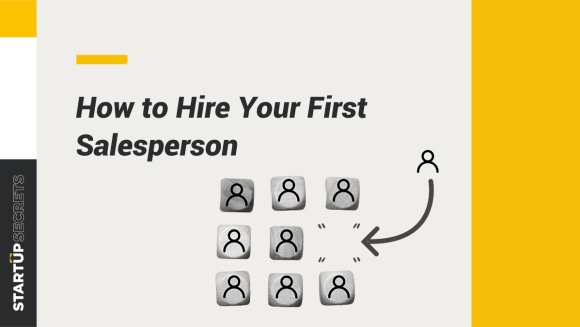Michael Schumann, Core Member and Sales Advisor, has built revenue streams from scratch for both publicly traded and early-stage companies. In this article, he outlines the type of mindset that helps founders get their first few customers.
We’ve all heard entrepreneur origin stories. At some point, many founders utter the phrase, “There has to be a better way….”. If you’re reading this, you’ve probably said it yourself.
Since then, you’ve worked tirelessly to find a solution. Now you’ve got a great idea, half a product, maybe some money… but no customers. If you find yourself in this position, it might be time to connect and build relationships with target customers within a Minimum Viable Segment. That starts with reaching out to people and learning about what’s going on in their world.
While every entrepreneur’s journey is different, there are some tried and true techniques for building relationships with your first customers. The very first step includes shifting your own mindset.
The Mindset for Getting First Customers
Imagine: You sit down (or Zoom chat) with a person you’ve never met before. They’ve decided to share some of their precious time with you. And you want their candid feedback. How would you start the conversation? How will you get them to relax, open up, and share their honest experience?
When you work so hard on your product or idea, it can easily become all you think about—and all you talk about. Beware! Talking about your product or idea ad nauseam can alienate your potential customer. It’s time to put any potential customers’ needs ahead of your own.
Ultimately, people just want to be heard and understood. To have an open and honest conversation, you need to gain their trust. Help them feel like you’re focused on solving some of their most pressing problems or accelerating their professional ambitions. And for that, you’ve got to sit back, listen, and learn.
It’s critical to keep in mind: If they’re talking, you’re winning; if you’re talking, you’re losing. As you think about how to structure this conversation, here are a few questions to ask yourself.
''It’s critical to keep in mind: If they’re talking, you’re winning; if you’re talking, you’re losing'' - @MichaelSchuman2 Click To TweetQuestions to Ask Yourself
As you go into this conversation, you have to be able to understand their perspective and speak their language. This demonstrates a level of credibility and shows you really understand the problem. These questions will help you gain internal clarity, which sets you up to say, “This is what we hear in the market…”
- What is the customer’s pain point? What problem will you solve for them?
Who is your customer? Narrow the field to your top five to 10 candidates.
- Who has this problem?
- Who cares the most about solving it?
- What’s their title? In which industries do they work?
- Note: Who has the problem and who cares most about solving it could be two different people. A CFO could have the problem, but the COO could care about solving it efficiently. They’ll both become part of your planning.
Why should they be talking to you?
- What is your solution’s business impact?
What are the true costs of your solution?
- Note: Think about both your own fees plus any internal costs they can expect during implementation such as time or lost productivity.
What is your competitive landscape?
- What are the alternatives?
- How much do they cost?
- How effective are they?
Questions to Ask Your Potential Customer
Now that you’ve put yourself in the customer’s shoes, it helps to brainstorm a list of questions to guide these conversations. Start by thinking about your ideal outcome. You might simply want someone to answer a specific question, or maybe you’re ready to provide an agreement and deliver results. Let your goal guide your questioning.
The following questions are suggestions. Considering tailoring them to help you achieve your goal. That way, you can sit down and say, “I’ve got five questions, and I’d love to get your perspective.” Who doesn’t love to give their opinion?
Remember that people reveal information in layers. Be curious and simply have a conversation.
- How are you currently solving this problem?
- How much does it cost you to solve it?
- How effective is this current solution?
- How much is the problem costing you?
- What are the bottom-line impacts due to the costs?
- What are the topline impacts due to missed opportunities?
- What does the problem cost you by not addressing it?
- Who is accountable for solving this problem?
- Who is suffering as a result of this problem?
- How does it impact them, professionally, personally, directly, or indirectly?
- What is the financial value of them solving this problem?
- What do they gain personally if this problem gets solved?
By thinking through these questions, you start to shift a product-focused mindset to a more customer-focused one. And once you have a customer-focused mindset, you’ll be better equipped to hold honest conversations with prospects and start building trust-based relationships.
As you start these conversations, you’ll have the opportunity to explore any hunches you have, gather learnings, and hone your target customer persona (more on that in my next post)!








